2023 SPONSORS


“DuPont does many EV webinars with various 3rd party vendors. WeAutomotive Group is the only vendor where we get global coverage – every single time. We had true Homogeneous coverage from every major region with around 30% from the Americas, 30% from EMEA and 30% from APAC. I counted 37 separate countries registered for the last webinar, which is exceptional”
VP Global Marketing & Communication, DuPont
PREVIOUS WEBINAR SESSIONS

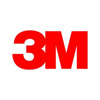
Electrical Insulation: Design Challenges, Materials, Application & Optimization for ePowertrain
David Stankes, Application Development Specialist, 3M
Speaker Bios | Company Profile
-
What are the design challenges of electrical insulation in EV battery and eMotor driven by major ePowertrain design trends?
-
Major types of electrical insulation materials and their application areas today
-
What are the major attributes (and disadvantages) of the major types of electrical insulation materials?
-
Next generation electrical insulation technologies to enable new ePowertrain design and manufacturing

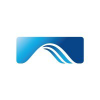
Advances In Thermally Conductive, Electrically Insulated Materials For E-Mobility Applications
Ray L. Szparagowski, Technical Director, Automotive and High Performance Plastics, Global Fluid Power Division, Freudenberg Sealing Technologies
Speaker Bios | Company Profile
Plastics are often used in electric components. For these materials, many requirements such as mechanical properties, temperature capability, flammability, thermal conductivity, and mold ability, among others, are considered in their selection. In addition, electrical resistance is required to isolate the system for safety reasons. In general, plastics are good electric isolators (electrically safe) but poor conductors of heat compared to metals.
In response to this challenge, work in developing Thermally Conductive Electrically Insulated (TCEI) materials has become an important focus for use in E-Mobility applications. Fillers play an important role in material properties of plastics, and Freudenberg Sealing Technologies, with its expertise in filled polymeric systems, has developed multiple new grades of TCEI materials that demonstrate improved conductivity over commercially available choices. The company has quantified the thermal conductivity of these novel materials using a unique finite element model to capture the effect of material choice on temperatures within systems. The model incorporates material orientation and also evaluates effect of air gap between components. Results show that materials with improved thermal conductivity can significantly reduce temperatures in applications.
-
Plastic grade materials that improve thermal management for temperature control and maintain electrical resistance for safety.
-
TCEI (Thermal Conductive Electrically Isolating) grades offer significant improvements in temperature control in E-Mobility applications.
-
FST advanced modeling techniques can evaluate application design and material impacts on temperatures to address critical hot spots that can occur.
-
E-motor applications such as bobbins and slot liners have shown significant temperature reduction using these new TCEI materials.

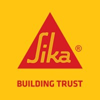
Enabling Sustainable High Performance Battery Systems
Antonio Voci, Product Manager E-Mobility, Sika Automotive
David Hofstetter, Senior Project Leader, Sika Technology
Speaker Bios | Company Profile
Curing by design Structural Adhesives
-
Reduced cycle times
-
Low curing Temp Solutions with a reduced CO2 footprint in assembly operations
New Generation TIM’s
-
Setting new state-of-the-art performance
-
Low-Density solutions offering Higher-performance properties
-
Enabling easy disassembly and recyclability


Latest Developments And Emerging Issues In Battery Thermal Runaway
Brian Engle, Business Development Manager – Amphenol Advanced Sensors
Speaker Bios | Company Profile
-
Attendees will be presented information on decomposition mechanisms within lithium ion cells and the physics of cell venting and ultimate failure.
-
There will also be presentation of data/results of first vent detection through the use of Amphenol’s REDTR sensor platform.
-
In addition, attendees will learn of the latest feedback from the field experiences dealing with lithium ion battery failures as well as methods for dealing with thermal runaway.


Sensor Design And Optimization For xEV, EVSE, And ESS Thermal Management
Brian Engle, Business Development Manager – Amphenol Advanced Sensors
Speaker Bios | Company Profile
-
Attendees will learn of the latest trends in xEV, EVSE, and ESS thermal system design as well as design features necessary for durable and accurate measurement and control of thermal management systems, including immersion cooling and heat pump type systems.
-
Presentation will review and address needs for critical sensing points within typical systems as well as environmental and communications constraints that drive design choices.


EV Battery & Electrification Testing – From the Grid To The Road
Jim Duffy, EV Business Development Manager, Automotive and Energy Solutions, Keysight Technologies
Joshua Love, Senior Power Solutions Engineer, Automotive and Energy Solutions, Keysight Technologies
Bob Zollo, Solution Architect for Battery Testing, Automotive and Energy Solutions, Keysight Technologies
Speaker Bios | Company Profile
Testing all areas in the E-mobility ecosystem!
Electric vehicles (EVs) are driving the future of the automotive industry. Success in this fast-paced, high-voltage, high-power transition to EVs requires readily available, safe, flexible, and accurate test equipment. With the demand to bring EVs to the market faster, getting there now is no longer an option…it is a requirement!
See how Keysight can help you test your EV designs in all the key areas:
-
Grid Power: everything up to and including the charging station
-
Battery Power: from cell chemistry to cell/module/pack testing
-
EV Power: efficient power conversion where it counts


Modeling Structural Adhesive Joints In Electric Vehicles
Joey Benson, Senior Application Engineer, 3M
Speaker Bios | Company Profile
-
The benefits of adhesives in electric vehicles
-
Adhesive selection and joint design
-
Methods for predicting joint performance
-
Modeling Structural Adhesives
-
Designing and optimizing joints with FEA

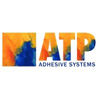
Pressure Sensitive Adhesive (PSA) Applications In E-mobility Applications
Paul Schwitter, R&D Leader & Business Development Manager, ATP Adhesive Systems AG
Speaker Bios | Company Profile
-
Self adhesive insulation films (mica, aramid) to prevent Thermal Propagation
-
Self adhesive layers in between the pouches (double sided tapes) for Cell-to-Cell bonding
-
Single sided or double sided Polyester / Polyimide films for electrical insulation and Cell wrapping


Automating Your Adhesive Application
Rachel Stephan, Application Engineer, 3M
Speaker Bios | Company Profile
-
Reasons to automate
-
Levels of automation
-
Automation equipment examples
-
Application considerations: What makes a good candidate for automation?
-
3M’s Bonding Process Centers


Low Carbon Footprint Technologies For Automotive Acoustics And Battery Composites: The Key Enablers For Sustainable Mobility
Pascaline Bregeon, Global Product Manager, Autoneum
Luca Mazzarella, Business Development Manager New Mobility. Strategic Development, Autoneum
Speaker Bios | Company Profile
-
How is electrification offsetting carbon emissions from tailpipe to production phase?
-
The importance of product Life Cycle Analysis standardization to align sustainability goals
-
What does sustainability imply on the complete automotive supply chain?
-
The key enablers of developing sustainable, high-performance and cost competitive solutions
-
Autoneum Pure, the first sustainability label for automotive acoustic products
-
Lightweight composite battery protection plate


Thermal Management Optimization For The Future Of Battery Designs
Dr. Sergio Grunder, Ph.D, Scientist, DuPont
Christophe van Herreweghe, Global Marketing Director, DuPont
Speaker Bios | Company Profile
-
Looking for solutions to improve EV charging speed, cold weather performance and battery reliability –all at a controlled cost? Working with a collaborative partner who understands your needs are key!
-
Get an inside perspective on the DuPont global Center of Excellence for thermal management and how it can help you accelerate development and testing of solutions for EVs
-
We offer formulation and testing equipment to facilitate a fast-paced development process, can expand small sample tests to module-scale testing and can collaborate across regions, functions and businesses
-
Our COE has pilot-scale capabilities and uses the same methodologies as OEMs and tiers, including scale-up pilot plant capability and application testing (electrical, safety, thermal, mechanical)


Thermal Management & Bonding of Lithium Battery Cells & Modules
Ralf Hoffmann, PhD, Head of New Business Development, ELANTAS GmbH
James Herbison, Head of Basic Research, ELANTAS PDG
Speaker Bios | Company Profile
Learn about the optimal materials needed for the bonding of battery packs for today’s EV lithium batteries, as well as thermal management of the packs or modules.
-
Bonding the battery packs to the module of frame (to the heat sink, individual packs, or the modules to each other)
-
Gap sealing between the packs
-
Thermal management materials taking heat from the modules or packs through to the heat sink
-
Sealing of the module or box that the batteries are packed into


In Pursuit Of Silence Inside BEVs: The New Products Behind The Next Level Of Acoustic Comfort
Davide Caprioli, Head of Product Acoustic and Thermal Performance, Autoneum
Philippe Godano, Global Product Manager Interior Floor, Autoneum
Speaker Bios | Company Profile
-
The new sources of noise inside a BEV do not carry an emotional message like an engine sound does
-
What is the expectancy of the public in terms of acoustic comfort?
-
The new sources of noise of a BEV: what should the sound package look like considering dedicated platforms’ designs?
-
Treatment of e-powertrain high frequency tonal noises by encapsulation
-
Efficient sound package to reduce rolling noise


Don’t Just Delay Cell-to-Cell Thermal Propagation, Stop It
John Williams, VP of Technical Services, Aspen Aerogels
Speaker Bios | Company Profile
-
Learn about the role of compression pads and cell-to-cell barriers in managing mechanical and thermal energy inside a module and/or pack
-
Review the landscape of possible solutions, including foams, fibers, foils, and aerogels
-
Understand how energy and material flows during a thermal event
-
See thermal propagation stopped cold in real-world testing of PyroThin, an aerogel-based thermal barrier


Liquid Cooling For EV Charging: How To Make Connections That Drive Performance & Reliability
Christopher Winslow, Applications Engineer, Thermal Business Unit, CPC
Rakesh Yedla, Applications Development Manager, Thermal Business Unit, CPC
Speaker Bios | Company Profile
-
What system types benefit from quick disconnects and where they are located within battery and EV Charging systems
-
Which are the most important quick release coupling specifications for ensuring adequate cooling
-
Why purpose-built for liquid cooling connectors are superior for keeping umbilical’s, station/pile electronics and batteries cool
-
What termination options are typically available and which are ideally suited for EV charging cooling
-
How coolant selection impacts connector reliability
-
Questions to ask suppliers regarding flow, testing, spillage and manufacturing processes


Thermal Conductive Adhesives For Next Generation Cell-to-Pack Configurations
Dr. Tim Fornes, Technology Fellow, Advanced Technology, Parker LORD
Susan Donaldson, Scientist I in the Advanced Technology Department, Parker LORD
Speaker Bios | Company Profile
A new class of thermally conductive adhesives have been developed for directly bonding prismatic battery cells to cooling plates. This lightweight technology not only affords higher energy density in EVs, but greatly reduces manufacturing cost and complexity.
Key Takeaways:
-
One route to achieving these goals is the elimination of the housings of battery modules and bonding individual cells directly to the cooling plate. This simplification eliminates numerous steps, parts, and materials. We’ll discuss the shift towards this design and how it benefits manufacturers when using thermal management materials
-
New adhesive technology is needed to meet more demanding performance requirements. This talk will review new developments in thermally conductive adhesives that enable direct bonding of prismatic cells to aluminum cooling plates.
-
Comparisons between the new cell-to-pack design and traditional battery pack configurations will be discussed.


Use Of Adiabatic Calorimetry In Battery Safety
Danny Montgomery, Technical Performance Manager, Thermal Hazard Technology
The webinar will describe the use of adiabatic calorimetry techniques that can be used to carry out safety testing of batteries. The theoretical background of the ARC (Accelerating Rate Calorimeter) test method will be described and recommended practice for various types of testing will be discussed. Batteries are be studied under either normal or abuse conditions. This information can be used to aid design of battery management/safety systems. As well as thermal data, pressure measurement and gas analysis are also available.
This webinar will focus on the following key topics:
-
Principle of adiabatic calorimetry
-
Advantages and limitations of the method
-
Determining the stability and safety of batteries
-
Electrical abuse in the form of short circuit, over-charge or over-discharge.
-
Mechanical abuse by nail penetration or crushing.
-
Thermal abuse via Heat-Wait-Seek (HWS), ramp heating or hotbox.
-
Determining battery efficiency and thermal management


Building Digital Twins Towards A Complete, Faster, Cost Effective & More Optimal Design Of Vehicles
Chin-Wei Chang, SIMULIA IPS | T&M Industry Process Expert Specialist, Dassault Systèmes
Dave Mukutmoni, SIMULIA IPS | T&M Industry Process Expert Specialist, Dassault Systèmes
Speaker Bios | Company Profile
In this presentation, we describe the simulation tools and workflows used for thermal design of vehicles; establish that these tools are accurate, and detail their implementation at both the component and vehicle integration level. We also show that use of these digital twin technologies leads to significant savings in both time and cost and is therefore a must have capability.
-
Introduce workflows and tools used to build digital twins for thermal analysis and how this leads to savings in time and resources
-
Describe how complete and accurate these tools and their impact on design both at the component and vehicle integration level
-
Highlight use cases that show the tools are streamlined and automated that enables non-specialists to implement them


Improve Process Efficiency Through Thermal Adhesive Simulation For Tool Path Optimization & Module Assembly
Jennifer Weiche, Simulation Analysis Engineer, AVL
Juergen Schneider, Senior Solution Manager Virtual Battery Development, AVL
Speaker Bios | Company Profile
For optimal cooling of battery packs and power electronics, it is of crucial importance that thermal grease (paste) is applied reliably in the battery manufacturing process. This ensures proper battery safety during operation and avoids warranty work.
-
Learn how simulation supports the development of automated manufacturing processes and improves production efficiency
-
Minimize squeeze-out losses during module assembly
-
Achieve wet-out targets through process optimization
-
Innovative solutions for simulating highly viscous materials
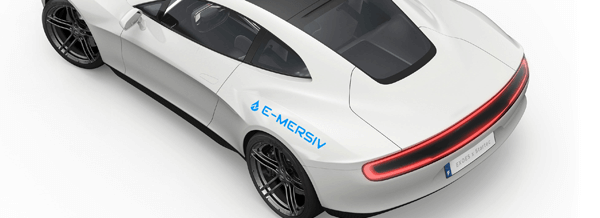

Battery Immersion Cooling: The Lightest And Safest Solution For EVs And HEVs
Rémi Daccord, CTO and Founder, E-MERSIV and EXOES
Mathieu Guery, Project Manager, E-MERSIV
-
What does the market expect from EVs?
-
Different types of battery thermal management systems
-
How does this new cooling technology work?
-
What are the advantages of immersion cooling?
-
E-MERSIV: Manufacturer of immersion cooled batteries.
-
Products developed by E-MERSIV
-
Tests carried out on E-MERSIV products
-
What is E-MERSIV’s target market?


Engineering The Thermal & Safety Challenges In Next-Generation Battery Packs
Bret A. Trimmer, Applications Engineering Manager – NeoGraf Solutions
Speaker Bios | Company Profile
-
The best current methods for EV battery thermal management will be reviewed.
-
The four primary strategies that battery pack manufacturers use to prevent Thermal Runaway will be discussed.
-
Each propagation control method introduces benefits or harm to the cells in terms of fast charging, cell cycle lifetime, charge rate, and driving range.
-
For applications where smaller-pack-size and lighter-weight are important, flexible graphite will be discussed as a direct substitute for aluminum.

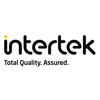
The Basics Of UN 38.3 And The Requirements For The Transportation Of Lithium Batteries
Rich Byczek, Global Technical Lead For Electric Vehicle & Energy Storage, Intertek
-
Cell and Battery Types & Definitions
-
Latest updates to the UN 38.3, 7th Edition requirements
-
Which tests are required for each type
-
When and how to reduce samples and testing
-
Interpreting the test criteria and when does a new battery require testing
-
And more…


Cell & Battery Abuse: Development Of Thermal Runaway / Propagation Tests For EV & Stationary Batteries
Rich Byczek, Global Technical Lead For Electric Vehicle & Energy Storage, Intertek
-
Understand the key regulatory and standards roadmaps for EV, Stationary and eMobility battery applications
-
Thermal runaway and propagation occurrences in the real world
-
Key Thermal runaway test requirements and standards
-
Methods of inducing single cell events in the lab environment
-
Scaling to module and system tests
-
Test criteria, data collection and measurement methods
-
Limitations and challenges in test environments
-
And more…..
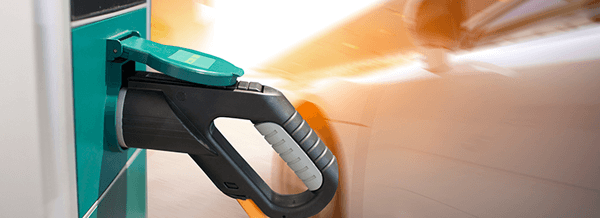

EVSE Charging And Safety Standards, Going Beyond Level 1 And 2
Rich Byczek, Global Technical Lead For Electric Vehicle & Energy Storage, Intertek
-
AC and DC charging safety standards
-
Cord sets through DC Fast Charge
-
Wireless charging considerations
-
North America and International markets
-
Micro mobility applications
-
Commercial Vehicle charging
-
Non-typical installations
-
And more…


Review Of Battery Cooler Brazing Development: Case Study
Grant Kiel,Senior Advanced Development Engineer, Senior Flexonics
Christian Marks, Account Manager, Senior Flexonics
Speaker Bios | Company Profile
-
Overall Brazing Capabilities
-
Types of Brazing
-
Brazing Materials
-
Case Study on Brazing Stainless Battery Cooler
-
Overview of Design
-
Brazing Challenges
-
Braze Alloy and Application Method
-
Braze Fixture Development
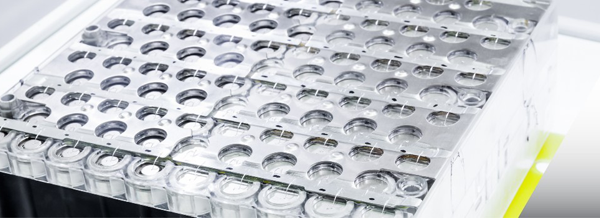

Thermal Propagation Prevention: Materials, Application, & Automation Techniques
Stephen Neuman, Director of eMobility and EV Battery, Graco Inc
Speaker Bios | Company Profile
-
The basics of how thermal events (runaway and propagation) occur.
-
Why this is a critical factor in the proliferation of eMobility
-
Mitigation Strategies – Interstitial Encapsulation, Intumescent Coatings, Thermal Interface Materials
-
Material chemistries
-
Design considerations for implementing best practices and process through the lens of mass manufacturing
-
The importance of considering manufacturability early in the module design phase

Robust Early Detection Of Thermal Runaway (REDTR)

Liquid Cooling for EVs – Cooling Strategies & Avoiding Issues for Reliable Fast Charging

Next Generation Silicone Solutions for xEV Battery Challenges

Staying Cool – Thermal Management When No Two Battery Packs Are The Same

Sensor Optimization For Effective Thermal Management And HP/HX Control For xEV And Stationary Storage Batteries

Thermal Propagation Control Strategies And The Use Of Flexible Graphite Heat Spreaders

Integration Of The Battery Casing With The Cooling Plate, Enabled by A Coolant-Resistant Structural Adhesive

Topic: Why is The Ultra-Thin Heating Polyimide Film The Best Value Solution For Battery Warm Up?

Innovative Material Solutions To Address Electric Vehicle Safety & Thermal Management Challenges

Innovations in Electric Vehicle Cooling Technology

Temperature Counts: Increasing xEV Safety, Comfort, Range And Performance With NTC Sensors

Safer, Cooler, Faster, And Farther – Adhesives For Thermal Solutions In EV Battery Packs

Cell & Battery Abuse: Development Of Thermal Runaway/Propagation Tests For EV & Stationary Batteries

Specifying Thermal Management Solutions For Battery Pack Design

Battery Thermal Comfort: A Multi-Component Approach

Overcoming Technical & Cost Challenges For Next Generation Automotive Batteries

Adhesive And Sealing Systems For High-Voltage Batteries In Electric Vehicles

Understanding The Thermal And Safety Challenges In Next-Generation Battery Packs

Why Immersed Battery Cooling

Monitoring Cell Temperature To Optimize Battery Performance And Design

Methodology For Modelling And Simulating Battery Thermal Runaway Events

Extending Battery Life of Electric Vehicle Fleets

Silicone Foams And Thermally Conductive Silicones In Battery Pack Assembly

Simulation To Aid Design: Accurately Predicting Thermal Performance And State Of Health Of A Battery Pack

Thermal Interface Materials – Gap Filler Liquids For Battery Systems

Material Solutions For Module Integration For Cylindrical Cells

Enabling Smarter Battery Pack Design & Assembly Processes With Innovative Adhesive, Sealant & Thermal Technologies

Innovative Thermal Interface Materials: How Adhesives And Sealants Are Accelerating xEV’s

Full System Solutions To Enable Battery Pack Assemblies With Innovative Adhesive & Thermal Management Solutions

EV Battery Pack Design And Material Selection For High Performing Batteries

Improved Methods For Leak Testing Li-Ion Batteries

Three Innovative Material Solutions To Address Technical Challenges In Automotive Electrification

Battery Connection Solutions In e-Mobility: 3 Distinct Technologies For Battery Manufacturing

Solving A Burning Issue: Dealing With Thermal Runaway

Driving Toward The BEV Tipping Point: Solving cost And Scalability Challenges

Upscaling Processes For New Battery Raw Materials From Laboratory Into Industrial Production

Breakthrough Silicon Anodes For Next-Gen EV Batteries

Material Options For Insulating And Protecting Power Distribution And Cooling Components In The Battery

Making The Next Super-Battery Solid-State Batteries

Efficient BMS Testing Throughout The BMS Development Lifecycle

Demystifying BMS Hardware-In-the-Loop (HIL) Testing

Methods For Leak Testing Lithium-ion Batteries

How New Laser Technologies Can Help Advance Your Battery Manufacturing

Introducing Battery Intelligence: The Key To Powering Your Battery Program Through COVID-19 And Beyond

How To Advance Aluminum Laser Welding In Automotive Structures

How To Advance Steel Laser Welding In Automotive Structures

Choosing The Right Scanner And Laser Solution In Battery Manufacturing

Using Clad Metal Innovations For Battery, Charging, And Thermal Management Challenges In Automotive Electrification

Powder Coating Solutions For Electric Vehicle Components

Innovative Solutions & Performance Materials For Lithium Ion Battery Packs

EV Battery Simulation, Accurately Predicting Performance & State Of Health

Upscaling Processes For New Battery Raw Materials From Laboratory Into Industrial Production

COVESTRO: New Ways To Manage Heat – Makrolon® TC

H.B. Fuller’s Innovative Materials For EV Batteries

Hybrid Electronic Control Technology For HV DC Switching

Battery Pack Material Selection & Design For Scaled Mass Production

Pressure Sensitive Adhesive (PSA) Applications In Li-ion Battery Assembly Processes

Laser Solutions For Demanding Battery Manufacturing Applications

Increasing Thermal Transfer In EV Batteries Through The Use Of Openair-Plasma® Technology

Engineering The Thermal & Safety Challenges In Next-Generation Battery Packs

Testing Battery Sensitivities of EV Subsystems Using Battery Simulation And Hardware-In-the-Loop (HIL) Techniques

Technical Manufacturing Audits Of Cell Manufacturers

Translating FTRC Results Into Practical Thermal Analysis Techniques

Why Is The Ultra-Thin Heating Polyimide Film The Best Value Solution For Battery Warm Up?

If your company is interesting in hosting or sponsoring a webinar or virtual workshop as part of this years Battery Thermal Management Innovation Webinar Series please reach out to us
info@we-automotive.com USA +1 (313) 799 2911 or Europe +44 (0)7932 631 029
Keeping Your Audience Engaged!
Book Your Session Now And Access Over 70,000 BEV Automotive Engineers Globally

Engage Your Target Audience
Host the most advanced, innovative, online Webinars and virtual events with multiple speakers and fully interactive attendees.

Easy Set-Up And Registration
Customize and brand your webinar advertising and registration forms. Retain registration management if you would prefer; collect delegate names, job titles, email addresses and telephone numbers.

Present With Confidence
We host via a cool, state-of-the-art, trendy, all singing all dancing platform! It is simple and intuitive for presenters and has advanced interactive capabilities for attendees from desktops, laptops, mobile devices, and conference rooms.
Chat: Set private and group panellist chat settings for attendees and panellists
Q&A And Polling: Manage and share audience input in Q&A dialog box where attendees ask questions, either live audibly or text answers
Attendee “Raise Hand”: Increase attendee engagement by allowing virtual hand-raising
Attention Indicator: Track how engaged your audience is with your content and which viewers show the most interest
![]()
HD Video And Audio
Multiple live video presenters and panellists can share their webcam and interact with the audience; If you’d prefer, you can to remain unseen, or just post a profile picture.
![]()
Live Broadcasting
We can all broadcast live across all social media channels with Facebook Live, YouTube and LinkedIn integrations.
![]()
Full Featured Host-Controls
Mute/unmute panellists, and promote attendee to panellist, giving them audio and video capabilities for enhanced engagement.
![]()
Reporting & Analytics
Get reports on registrants, attendees, polling, engagement levels and Q&A for follow up.
![]()
On-Demand Viewing
Host larger-scale events with help from our team, including planning, rehearsal and live support.



